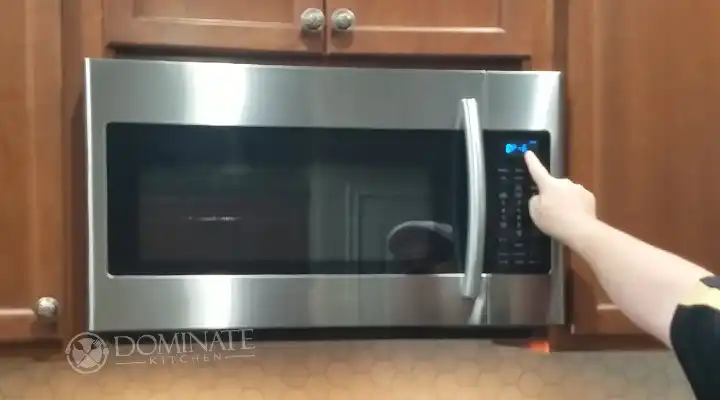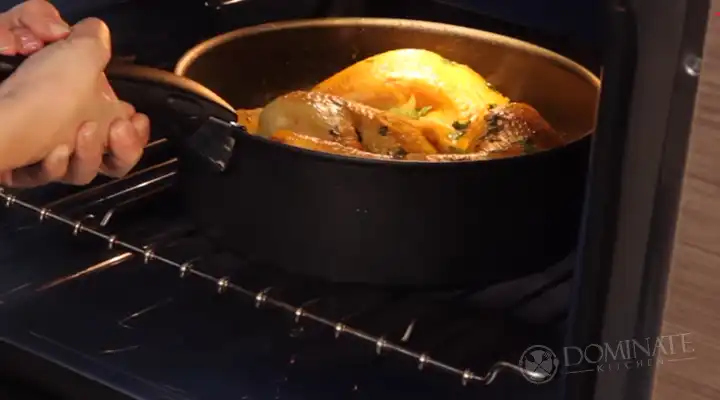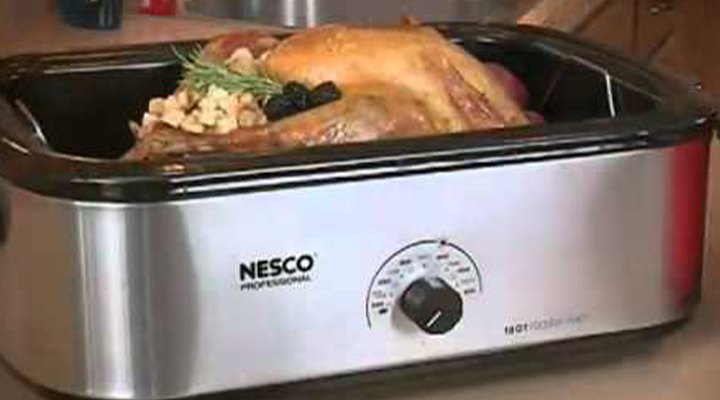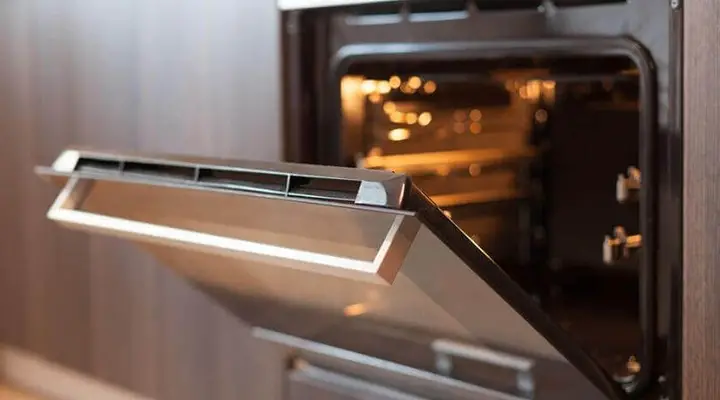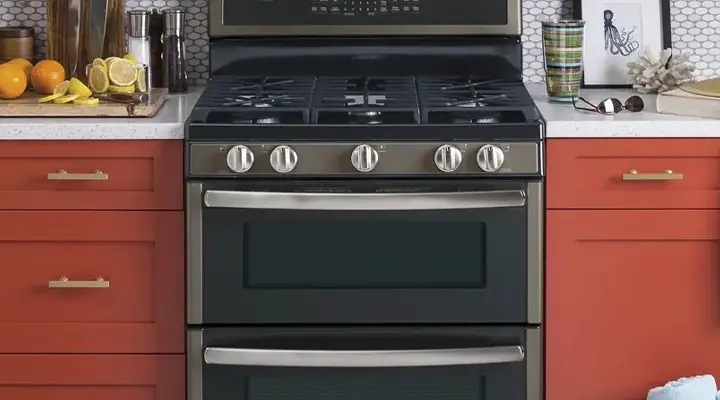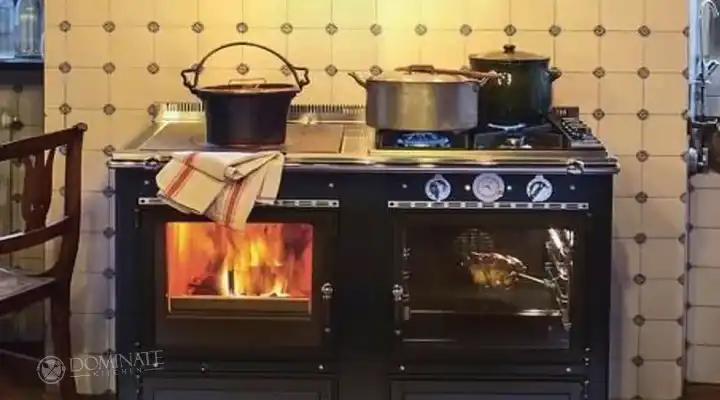Can Silicone Ice Trays Go In The Oven? Is It Safe?
At some point or another, we’ve all been there. You want to make cute little shapes out of your food but don’t want to go through the hassle of buying special equipment. And, it is possible that you’ve probably got a couple of silicone ice trays lingering in your freezer, just taking up space. So you think, can silicone ice trays go in the oven?
Unfortunately, ovens and silicone don’t always play well together. We did some testing so you don’t have to, and here’s what we found out about using silicone ice trays in the oven.
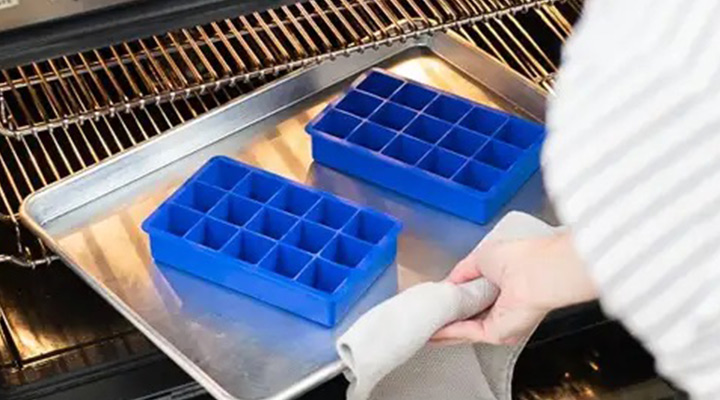
Can Silicone Ice Trays Go In The Ovens?
Many people are surprised to learn that silicone ice trays can actually be used in the oven. While it is true that they are made of silicone, which is a heat-resistant material, there are a few things to keep in mind before using them in this way. First of all, make sure that the ice tray is oven-safe. Most silicone ice trays will have this information on the packaging. If not, check with the manufacturer to be sure.
We put silicone ice trays to the test to see if they could withstand being in the oven. We baked them, froze them, and even microwaved them. After that, we found out that the silicone ice trays can withstand temperatures up to 400 degrees Fahrenheit before they start to degrade. Besides, they can be used in the freezer but will not retain their shape as well as other materials when frozen solid.
However, it’s important to note that silicone doesn’t conduct heat as well as metal, so your food may not cook evenly if you’re using a silicone tray. It’s also a good idea to put a sheet of parchment paper under the tray to help with even cooking.
If you’re looking for an oven-safe way to ice your cakes or make creative shapes out of chocolate, silicone may be the answer. Unlike plastic trays, silicone trays can withstand 400 degrees high temperatures without melting or warping. However, it’s important to note that while the material itself is heat resistant, it can still be damaged if it comes into direct contact with a hot surface.
So if you’re using a silicone tray in the oven, make sure to place it on a baking sheet or other safe surfaces first. Notably, silicone trays can also roast vegetables or make savory dishes like quiche.
Is Silicone Toxic When Heated?
Silicone is safe to use in the microwave or dishwasher, but heating it too hot or for too long can cause it to break down and release vapors that can be toxic. Similarly, some reports have shown that silicone is toxic when exposed to high heat.
For example, it’s possible that silicone bakeware could leech poisonous fumes when heated at high temperatures. However, it’s important to note that the FDA (Food and Drug Administration) has cleared silicone bakeware for use up to 450 degrees Fahrenheit.
Primarily, silicone is not considered a toxin, but some silicones like dimethicone will emit fumes when heated that are a bit toxic when inhaled. This is why it’s best to avoid using silicone in a hot climate or high temperature. As silicone can be harmful when heated, so it’s better to use silicone cookware in the microwave instead of other ovens.
Why Do Silicone Ice Trays Smell Like Vinegar?
The smell comes from the chemicals that are used to make silicone. These compounds have a strong vinegary smell. There are now some silicone ice trays on the market that do not have that smell, but I personally prefer the ones that do so that I can tell when my ice cubes are ready.
Usually, silicone ice trays have a tendency to have a powerful smell when they’re new. The scent fades after a couple of uses, but it’s hard to get rid of it completely.
In fact, silicone ice trays smell like vinegar because they’re made with a chemical called dimethyl silicone that reacts with oxygen and creates the smell. Your freezer can also smell vinegar if you don’t clean it regularly. If you’re worried about the smell, you can just put a plastic tray in with the silicone one.
To clarify, silicone is a synthetic polymer, which means it’s a material made up of long chains of repeating smaller molecules. There are literally thousands of different silicone polymers, but they all have one thing in common: they all contain a silicon-oxygen bond. And, the oxygen atom in that bond is what makes silicone smell like vinegar.
Is Boiling Silicone Ice Trays Safe?
Yes, boiling silicone ice trays is safe. However, you should always check your ice trays from time to time because silicone can deteriorate at high heat or in direct sunlight over time. You should also avoid using a silicone ice tray if it has any tears or holes. Not to mention, it’s perfectly safe to put silicone ice trays in boiling water, just not boiling liquid. The silicone expands when it gets hot and then contracts when it cools down. There are also silicone ice trays that are specifically designed for boiling water.
To ensure a safe boiling process, the silicone trays should be placed in an aluminum pan. Also, make sure not to over-boil the water because it may melt the silicone tray. You should keep in mind that boiling silicone ice trays are only safe because they’re made of synthetic material and not organic ones.
In other words, the silicone ice trays you’re using were manufactured in a lab that makes silicone products. The boiling water or liquid does not affect the silicone so you can safely boil your silicone ice trays without any harm.
Conclusion
As a whole, silicone ice trays are safe to use in the oven until the temperature exceeds the limit. Actually, these ice trays can take up to 400 degrees Fahrenheit. You should use only oven-safe silicone ice trays to completely avoid making the process toxic. Finally, be careful about putting the ice trays in the oven so that they don’t get into direct contact with the hot surface.

